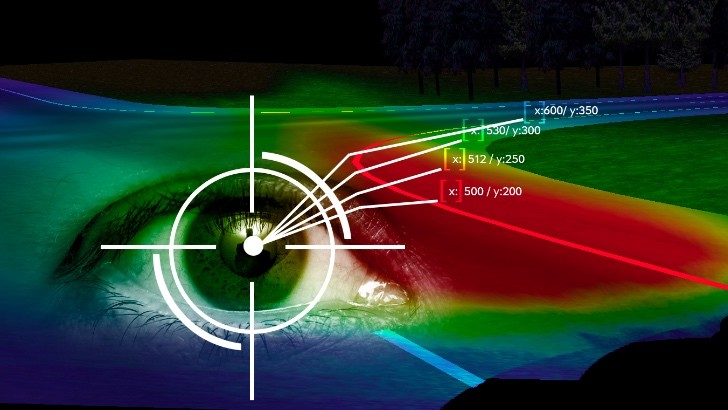We know how confusing new technologies can be without a proper explanation next to them, so here’s why we’re trying to break down Opel’s latest example of automotive lighting.
The latest obsession in the automotive industry is not related to design and engines, but it tackles a more, literally, straight-forward subject: headlights. Audi and BMW are still indecisive about who invented the laser headlights first, LED Matrix technology is already here, so what’s next? Well, Opel engineers think they have the answer to that: it’s called eye-tracking technology.
In simple, plain English, the eye-tracking technology stands for car headlamp beams that are directed by the driver’s eye. It may sound sci-fi but according to Opel, it is possible.
The webcam is focused on the driver’s head and it scans the face’s prominent points such as the nose and eyes in order to detect movement and estimate the drivers’s line of sight. The system had to interpret the information into data commands for the electronically-controlled actuators which had the task of aligning the vehicle’s headlamp projectors.
However, this solution was not the best one because calculation of the data took too long and the webcam’s recording rate was not quick enough. In other words, eye-control of the headlamps was possible, but in a delayed manner, way too late to ever-changing road traffic conditions
In this setup, the system can scan the driver’s eyes at rate of over 50 times per second in dusk and night-time conditions, allowing the headlamp actuators to react instantaneously and make the required horizontal and vertical adjustments.
Now, Opel claim they came up with a sophisticated delay algorithm that allows the light cone to move in a suitable manner, at the right rate. In addition, the eye-tracker does not require calibration for each individual that sits behind the wheel, no matter their size.
Moreover, in the situation when the driver is distracted from looking at the road ahead, lighting is always kept in the direction of travel, a safety solution possible because the low beam of the headlamps is programmed to ensure sufficient illumination.
If development is as encouraging as Opel says it is, we should be seeing the automotive lighting system introduced within the next 18 months, along with a refined AFL+ system and LED matrix technology.
In simple, plain English, the eye-tracking technology stands for car headlamp beams that are directed by the driver’s eye. It may sound sci-fi but according to Opel, it is possible.
How it started
Opel used the 'less is more' philosophy in developing the eye-tracking technology so engineers came up with a simple webcam instead of a more complex system that would normally require five to ten small cameras.The webcam is focused on the driver’s head and it scans the face’s prominent points such as the nose and eyes in order to detect movement and estimate the drivers’s line of sight. The system had to interpret the information into data commands for the electronically-controlled actuators which had the task of aligning the vehicle’s headlamp projectors.
However, this solution was not the best one because calculation of the data took too long and the webcam’s recording rate was not quick enough. In other words, eye-control of the headlamps was possible, but in a delayed manner, way too late to ever-changing road traffic conditions
The improvement
Since practice makes perfect, Opel tried optimizing the camera’s operating parameters while also adapting the eye-tracking algorithm. Their solution was equipping the camera with peripheral infrared sensors that work together with central photo-diodes.In this setup, the system can scan the driver’s eyes at rate of over 50 times per second in dusk and night-time conditions, allowing the headlamp actuators to react instantaneously and make the required horizontal and vertical adjustments.
Finishing touches
With the delay issue taken care of, another obstacle had to be overcome. While driving, a person’s eyes jump from one focal point to another very fast. It’s a natural and unconscious movement that couldn’t be followed step by step by the headlamps, as the car’s light cone would have jerked around erratically, disturbing both the driver and the passengers in cars coming from the opposite direction.Now, Opel claim they came up with a sophisticated delay algorithm that allows the light cone to move in a suitable manner, at the right rate. In addition, the eye-tracker does not require calibration for each individual that sits behind the wheel, no matter their size.
Moreover, in the situation when the driver is distracted from looking at the road ahead, lighting is always kept in the direction of travel, a safety solution possible because the low beam of the headlamps is programmed to ensure sufficient illumination.
If development is as encouraging as Opel says it is, we should be seeing the automotive lighting system introduced within the next 18 months, along with a refined AFL+ system and LED matrix technology.
